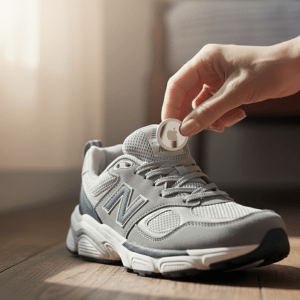5 Things Caregivers Should Know About Using AirTags for Dementia Wandering
I’m a fan of using beacons and trackers, such as Apple AirTags and Tile tags, and I use them myself to help keep tabs on my senior loved ones.
But there are a few important things caregivers should know about using AirTags for dementia wandering. It’s especially important to understand how to use them safely, legally, and effectively. Knowing what AirTags can and cannot do helps you make the right choice for your situation.
AirTags can be helpful, but they are not safety devices and should not be used as the only way to protect someone who may wander.
Many caregivers try AirTags first because they are familiar.
Most do not realize what AirTags can and cannot do for safety.
This page explains the difference in plain language.
1. AirTags for dementia wandering were not originally designed for people
Apple created AirTags to locate personal belongings like keys, wallets, and bags. While some caregivers repurpose them to track loved ones, it’s essential to recognize their limits.
- AirTags don’t offer real-time GPS
- They rely on nearby Apple devices (30–100 feet, depending on the environment) to update locations
- Location updates may be delayed or skipped if no Apple devices are nearby
- They require a battery that generally lasts about one year
- They are water-resistant
- They may not be reliable in every environment or emergency
2. How AirTags for dementia wandering rely on other people’s iPhones
AirTags use Bluetooth to send out a secure signal that nearby Apple devices can detect. These devices, whether yours or someone else’s, quietly update the AirTag’s location in your Find My app through Apple’s Find My network, which includes millions of devices.
- They work best in populated areas like neighborhoods and stores where Apple devices are frequently nearby
- They are less reliable in rural areas, during car travel, or in areas with limited iPhone presence
- In less connected areas, the tracker may only show the last known location until a new signal is picked up
Knowing this helps you plan where and how to use AirTags effectively. In many cases, they add helpful peace of mind, but for high-risk situations or remote areas, it’s wise to combine them with tools that provide real-time GPS tracking.
3. Where to place AirTags for dementia wandering safety
Some people with dementia may become anxious or fixated on unfamiliar objects, especially if they feel unusual. The way you place an AirTag matters.

- Choose discreet, comfortable spots like shoes, jacket linings, or sewn-in pouches
- Avoid shiny or bulky holders that could be anxiety provoking
- Don’t place them in RFID-blocking wallets or metal containers (these block the signal)
- If using it in a purse, have at least one backup tag on an item that is more likely to go with the person during a wandering event
The goal is to keep the tracker discreet, comfortable, and effective without adding confusion or distress.
AirTags should not be used as your primary safety tool for dementia wandering.
4. Tracking laws and AirTags for dementia wandering
Even when your intention is safety, tracking a person using any device such as an AirTag can raise legal and ethical questions.
- Laws about tracking vary by state, and consent or legal authority may be required.
- If the person cannot consent, legal authority (like guardianship or POA) may be necessary
- Laws differ by state, so it’s best to check your state’s policies or consult an elder law expert
Note: This should not be considered legal advice. As laws vary by state, it’s best to understand the regulations in your area or consult an elder law expert to ensure your tracking plan is both safe and compliant. A good place to start is your state’s official government site. Another helpful resource is the Private Use of Location Tracking Devices: State Statutes.
55. AirTags for dementia wandering work best as part of a layered safety plan
AirTags can ease worry, but they have limitations and they’re not a complete solution for dementia wandering. Many caregivers use them as one part of a layered safety plan that includes other tools to increase reliability and reduce risk.
Use AirTags with:
- Door and motion alarms
- Smart locks
- Real-time GPS devices
- Cameras for visual reassurance
Every situation is different, but safety improves when you use multiple methods tailored to your loved one’s habits and needs.
AirTags offer an affordable, easy-to-use tool to help caregivers feel more secure, but they aren’t a one-size-fits-all solution. When used thoughtfully and paired with other tools, they can become part of a reliable, layered safety plan.
The most effective approach to dementia wandering combines your understanding of your loved one with thoughtful decisions and the right mix of supportive technology. Your insight, care, and attention already make a difference, and the right tools can help you do even more.
Looking for next steps?
Explore our Wandering Tech Guide, compare GPS tracker options, or download our free Wandering Prep Kit to start building your personalized safety plan today.





